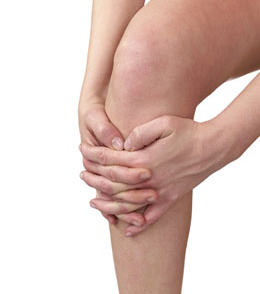According to physiologists, gradual increasing muscle pain 24-48 hours after the sudden physical activity is termed as delayed onset muscle soreness. The following article provides information about this phenomenon and remedies to get rid of the pain.

If you are experiencing a weird sort of muscular pain even two days after exercising it is probably delayed onset muscle soreness (DOMS). It is a condition that develops in the muscles when the body is subjected to unknown or unfamiliar physical strain. The condition is common in cases where the athletes are subjected to certain types of exercises. Also, it is most prevalent at the beginning of the sporting season when athletes return to the regimen after a period of rest. The initial phase of muscle soreness can hamper your daily routine. The muscles undergo a bit of stress and may get slightly damaged. Sore muscles after a workout is a common phenomenon, however, if you continue the physical activity then the muscles develop something known as muscle memory or acclimatization.
What is Delayed Onset Muscular Soreness?
This condition was first described by Theodore Hough, in 1902. He claimed that the soreness of muscles is due to ruptures in the muscle (micro-injury). DOMS is a condition that is characterized by sore, stiff, and aching muscle. This condition sets in after 24 hours of the physical activity. The symptoms are the strongest a day after the exercise and last for around five days. Apart from stiffness and soreness, slight swelling may also be observed. The reason behind this condition is slight microscopic tear in the muscle, or cellular damage. The pain occurs as a result of the inflammatory response of the body to the cellular damage. It may take a week to recover from this muscle soreness.
The root causes can be:
- Stressing the muscle beyond its tolerance limit.
- Increasing the intensity of your exercise.
- Increasing the duration of the physical activity.
Treatment
There are a various ways in which one can get relief from this condition. Given below are some of the home remedies that can soothe your muscles.
Ice Bath
A bath in ice water for around 20 m immediately after a strenuous workout or run, diminishes the possibility of swelling due to tissue or cell damage.
Heat Treatment
A heat pack can be applied to the muscles which you think might get sore after a workout. It increases the blood flow, thereby increasing the supply of oxygen to the strained muscles. During a workout, since the muscles cannot get enough oxygen, it works in the absence of oxygen. Thus, supply of oxygen after a workout can be beneficial for the recovery process.
Stay Active
Stay active for 1-2 days after a DOMS-inducing workout. Keep moving and do not let your muscles go into a complete-rest mode. Decrease the intensity and duration of the workout for the next 1-2 days. Walking around is a low-impact exercise that can help in lowering the intensity of the DOMS.
Stretching
Pre-workout and post-workout stretching is of utmost importance before subjecting yourself to a heavy workout. The muscles should get some prior training which helps them loosen up and adjust better to a little more stress.
Adapting to the Pain
Endurance training such as running, swimming, and cycling gets your body acclimatized to the pain, and increases the pain threshold. This is exercise-induced analgesia. Once the muscle undergoes stress or small damage after the first exercise, it tends to adapt to that exercise to prevent any further damage from it. This tendency of the muscle to adapt and prevent damage is known as repeated-bout effect. Thus, the key to get rid of DOMS is to keep exercising in a proper and correct manner, so that your body slowly adapts to the change.
DOMS is thus not a serious injury, but inappropriate methods and exercise regimes can cause serious muscle damage. Therefore one needs to carefully design his/her workout regime.


 If you are experiencing a weird sort of muscular pain even two days after exercising it is probably delayed onset muscle soreness (DOMS). It is a condition that develops in the muscles when the body is subjected to unknown or unfamiliar physical strain. The condition is common in cases where the athletes are subjected to certain types of exercises. Also, it is most prevalent at the beginning of the sporting season when athletes return to the regimen after a period of rest. The initial phase of muscle soreness can hamper your daily routine. The muscles undergo a bit of stress and may get slightly damaged. Sore muscles after a workout is a common phenomenon, however, if you continue the physical activity then the muscles develop something known as muscle memory or acclimatization.
If you are experiencing a weird sort of muscular pain even two days after exercising it is probably delayed onset muscle soreness (DOMS). It is a condition that develops in the muscles when the body is subjected to unknown or unfamiliar physical strain. The condition is common in cases where the athletes are subjected to certain types of exercises. Also, it is most prevalent at the beginning of the sporting season when athletes return to the regimen after a period of rest. The initial phase of muscle soreness can hamper your daily routine. The muscles undergo a bit of stress and may get slightly damaged. Sore muscles after a workout is a common phenomenon, however, if you continue the physical activity then the muscles develop something known as muscle memory or acclimatization.